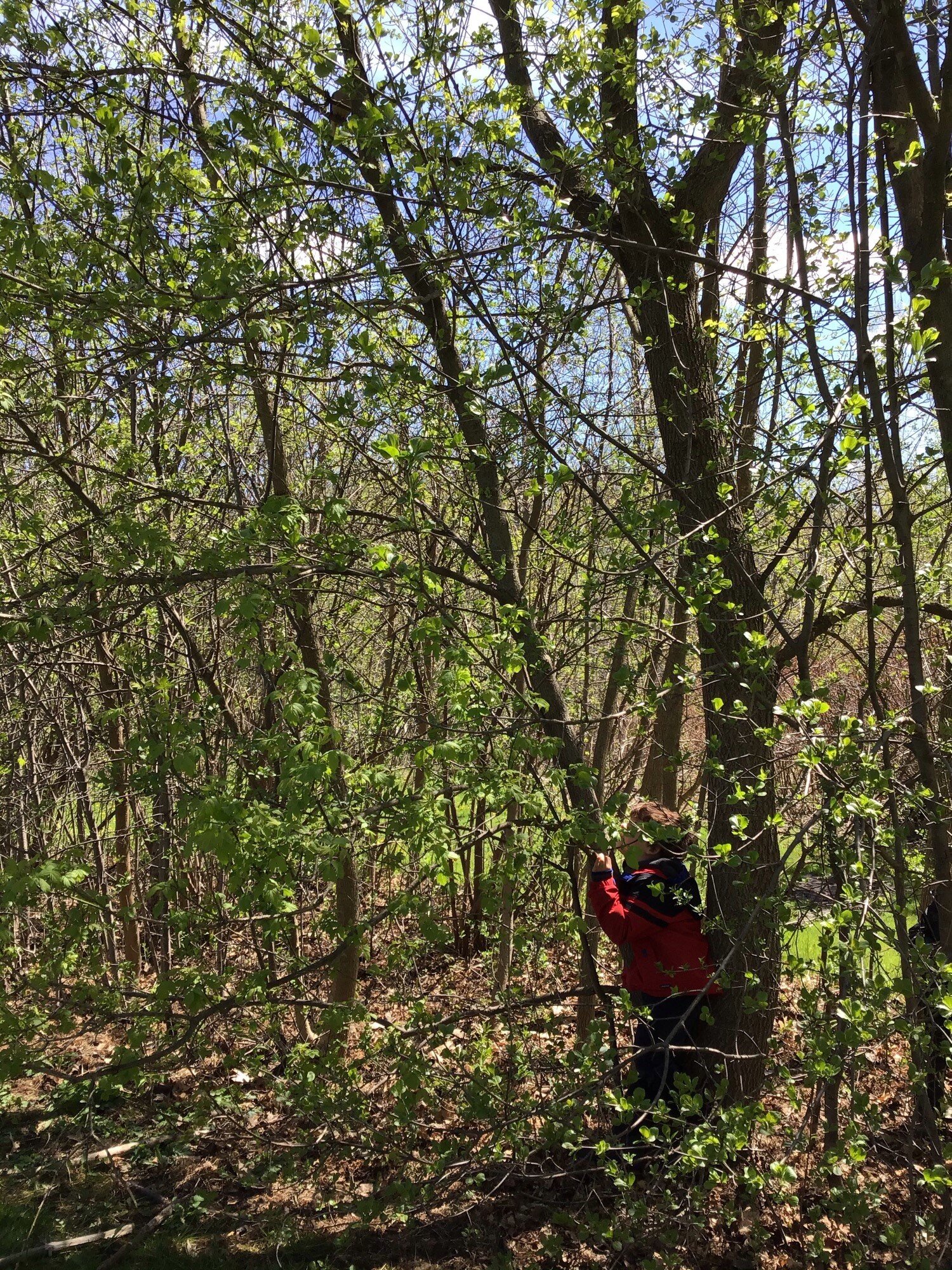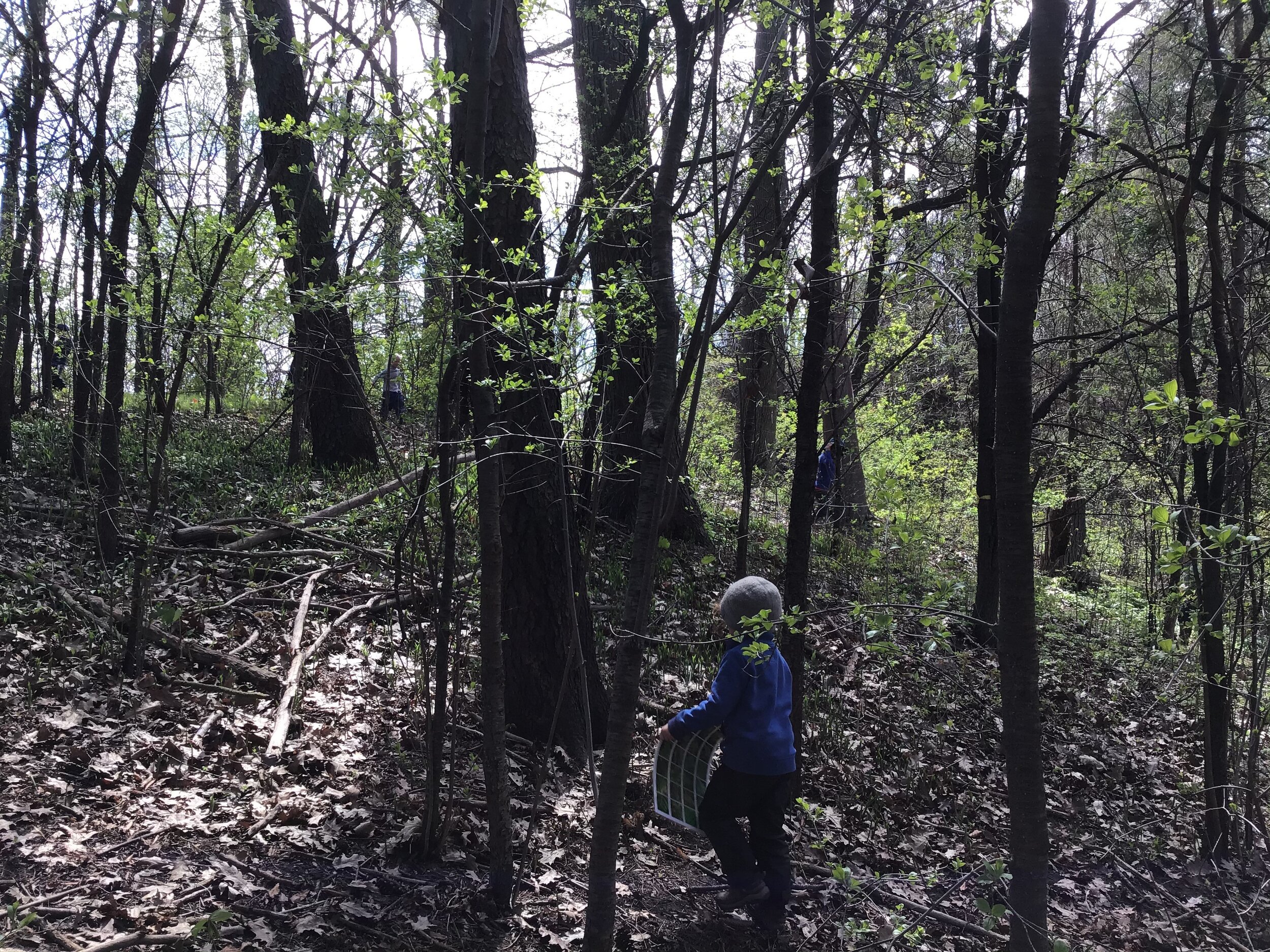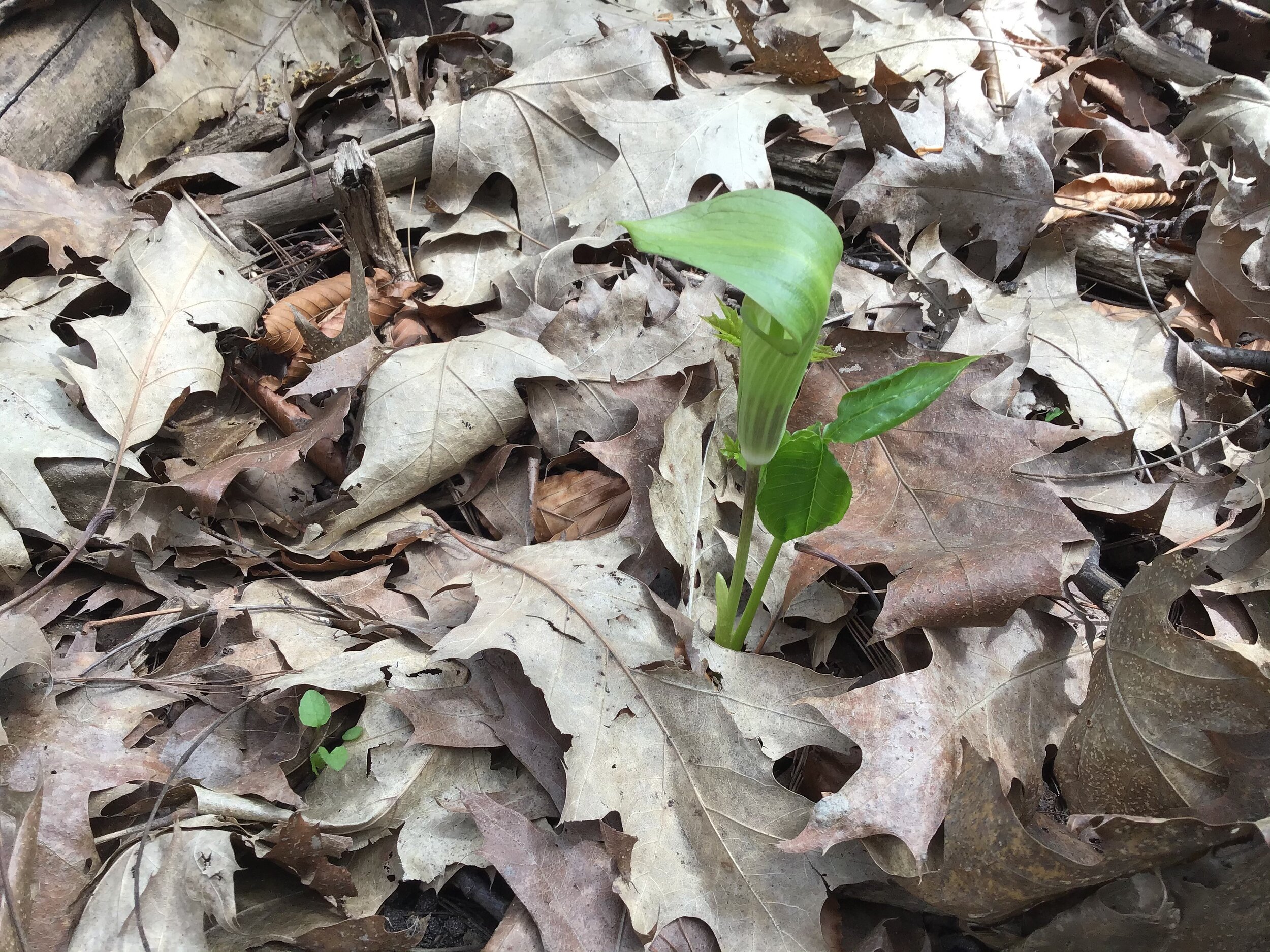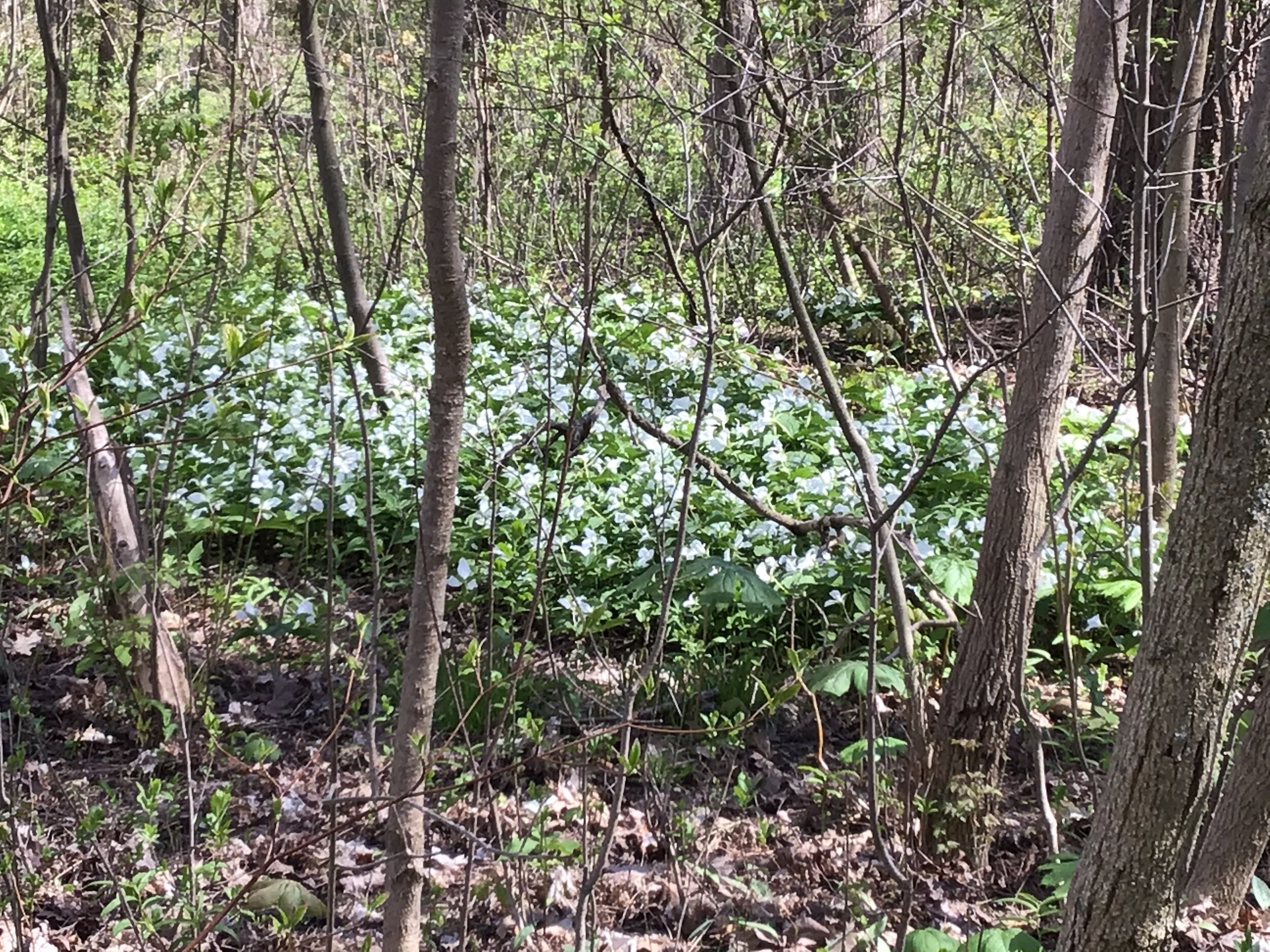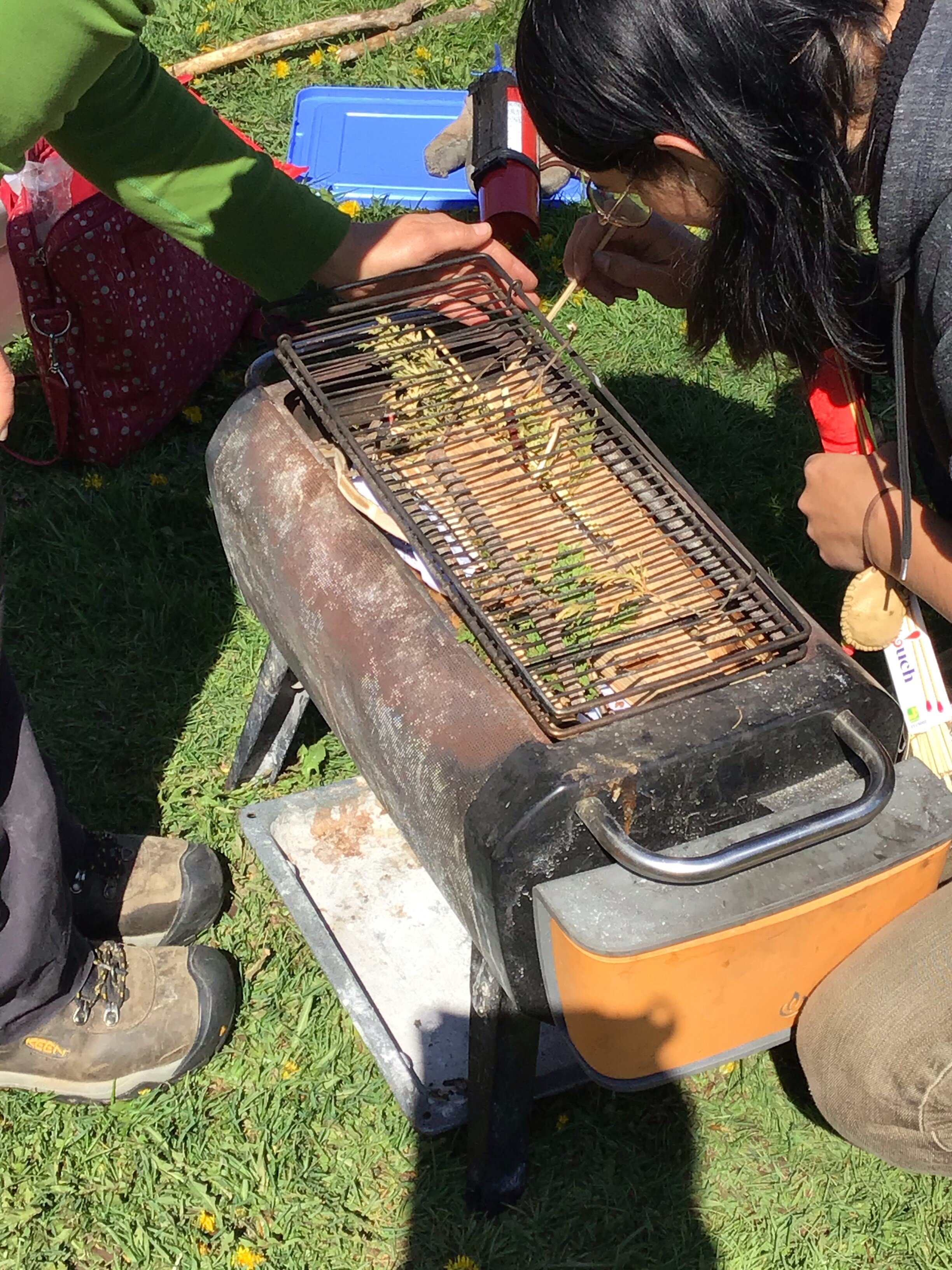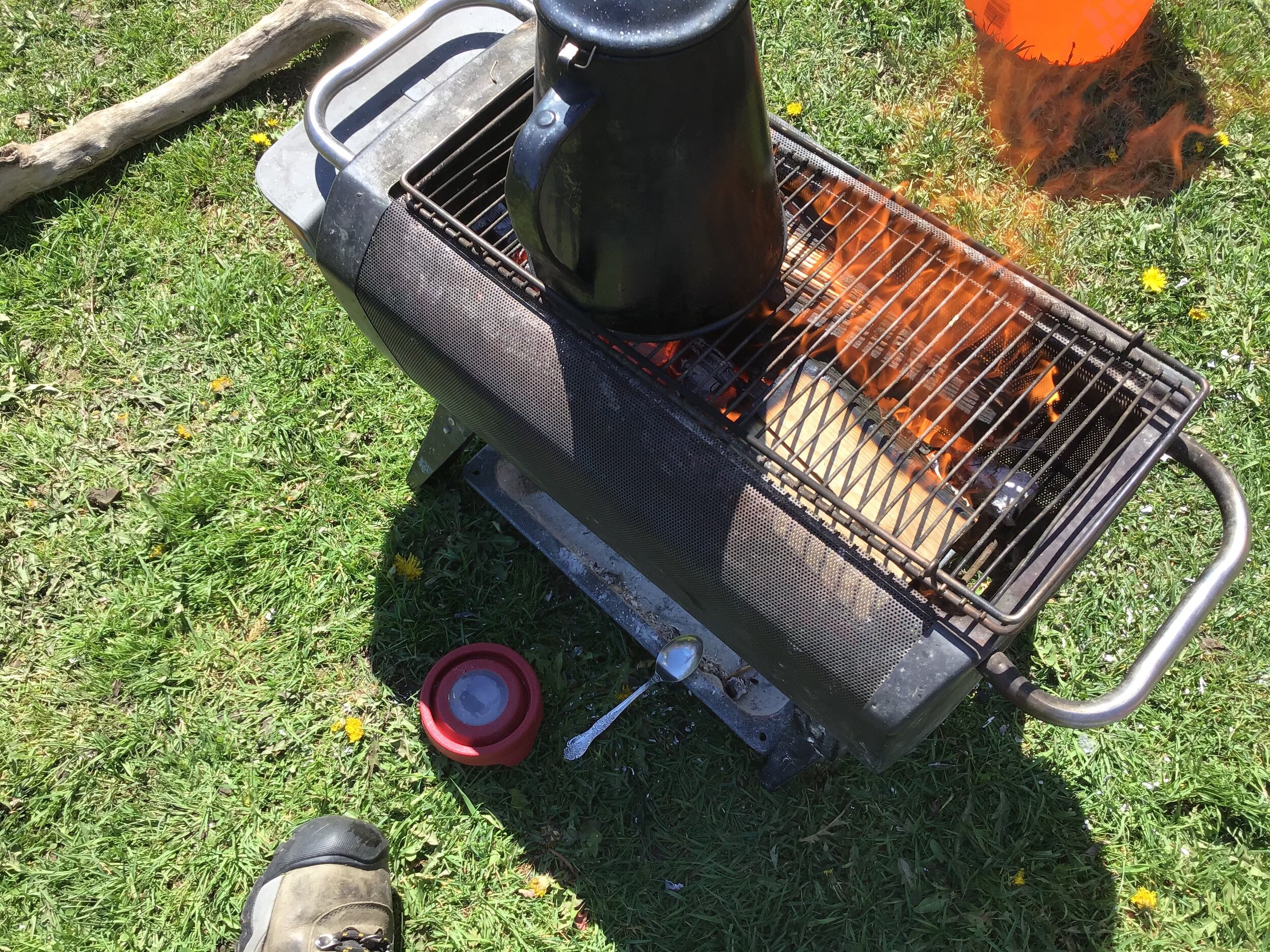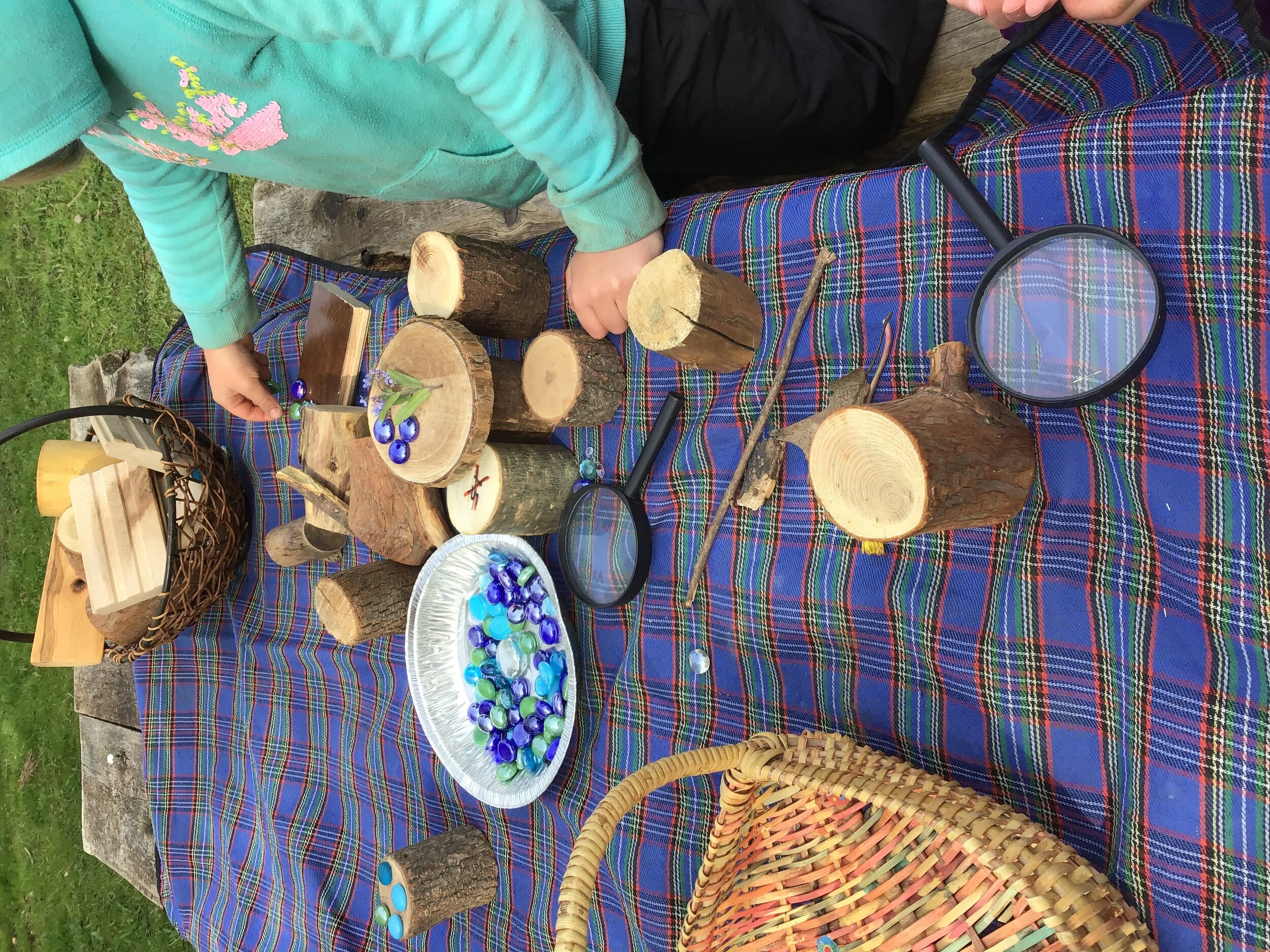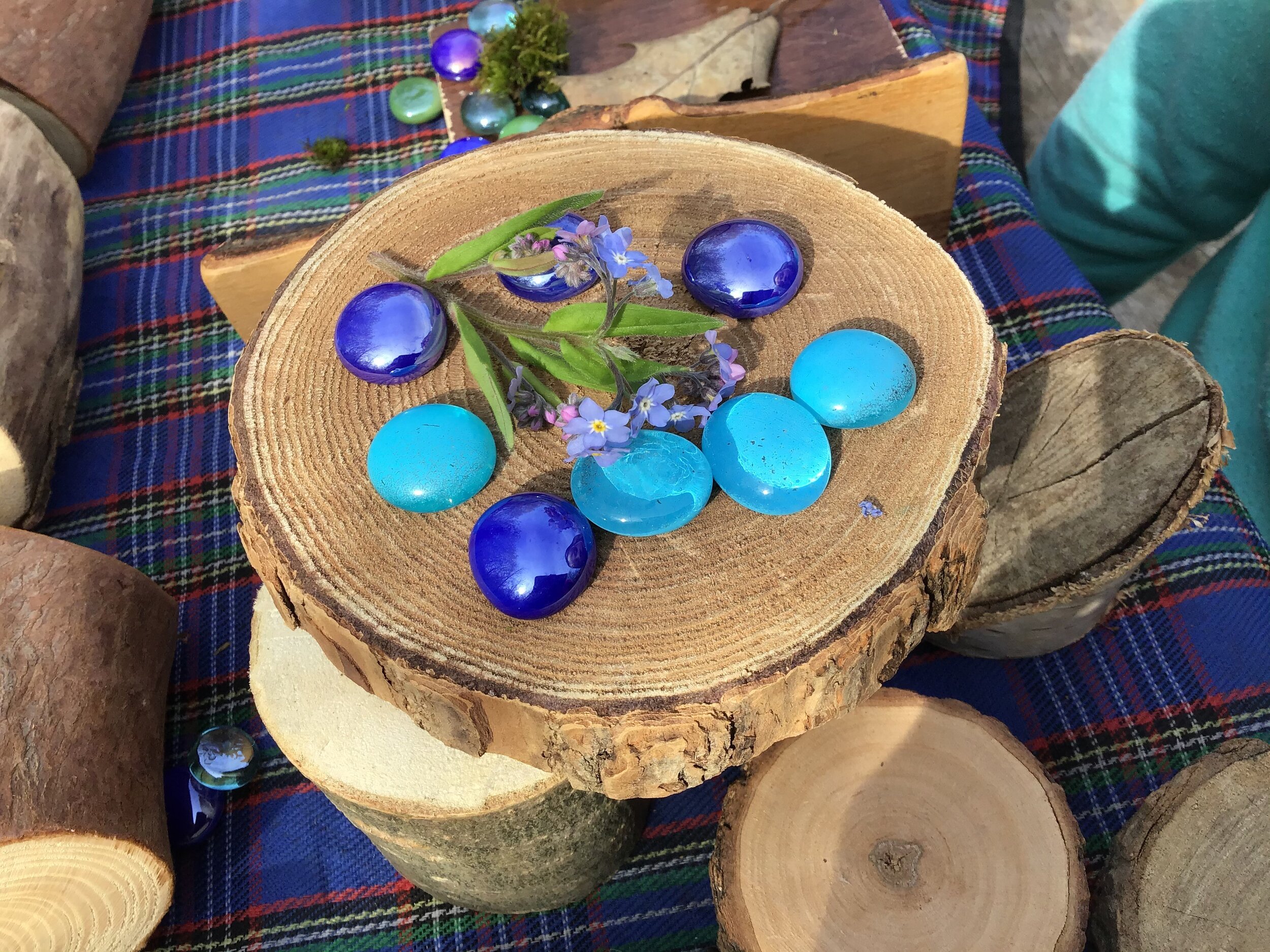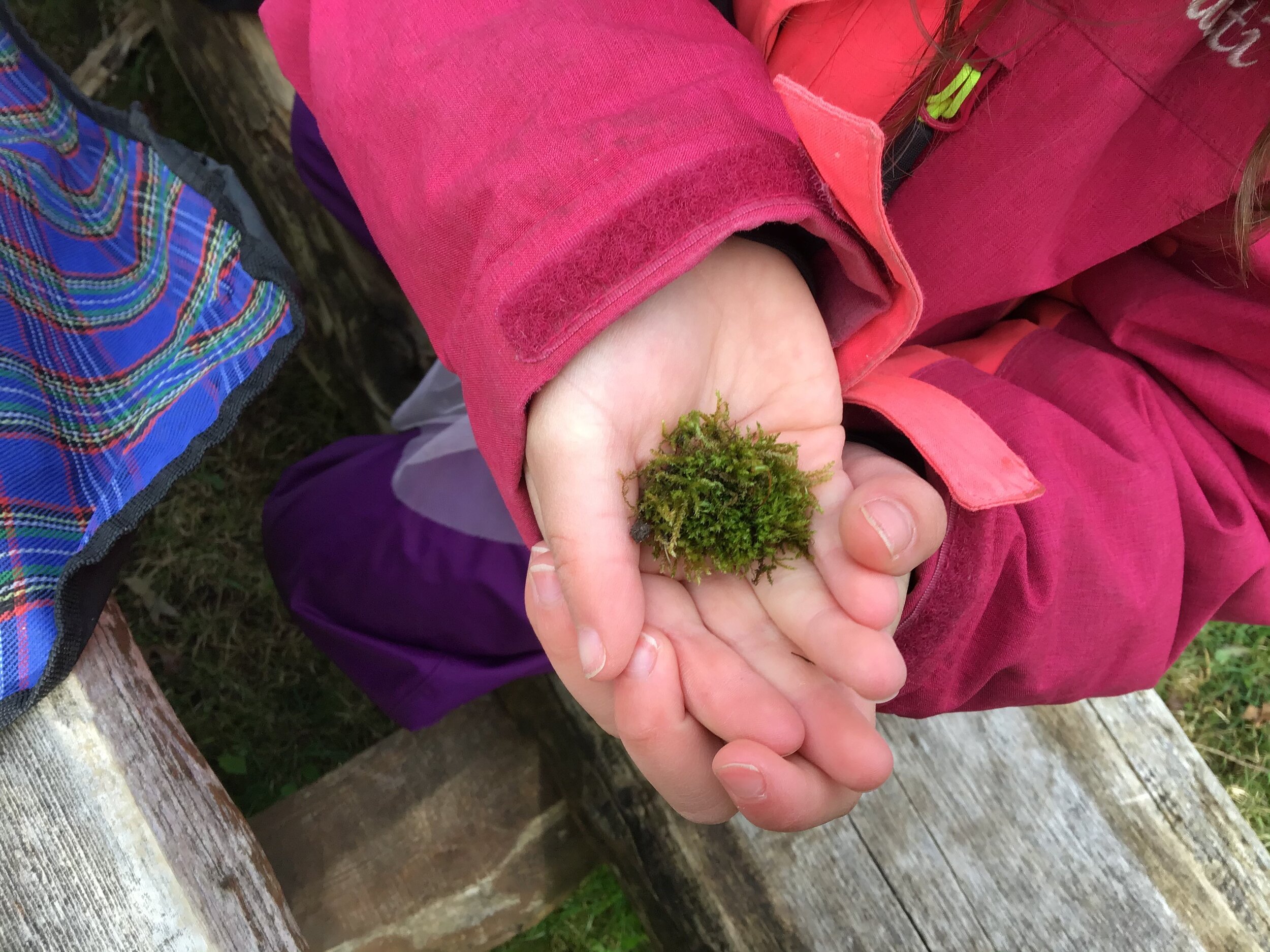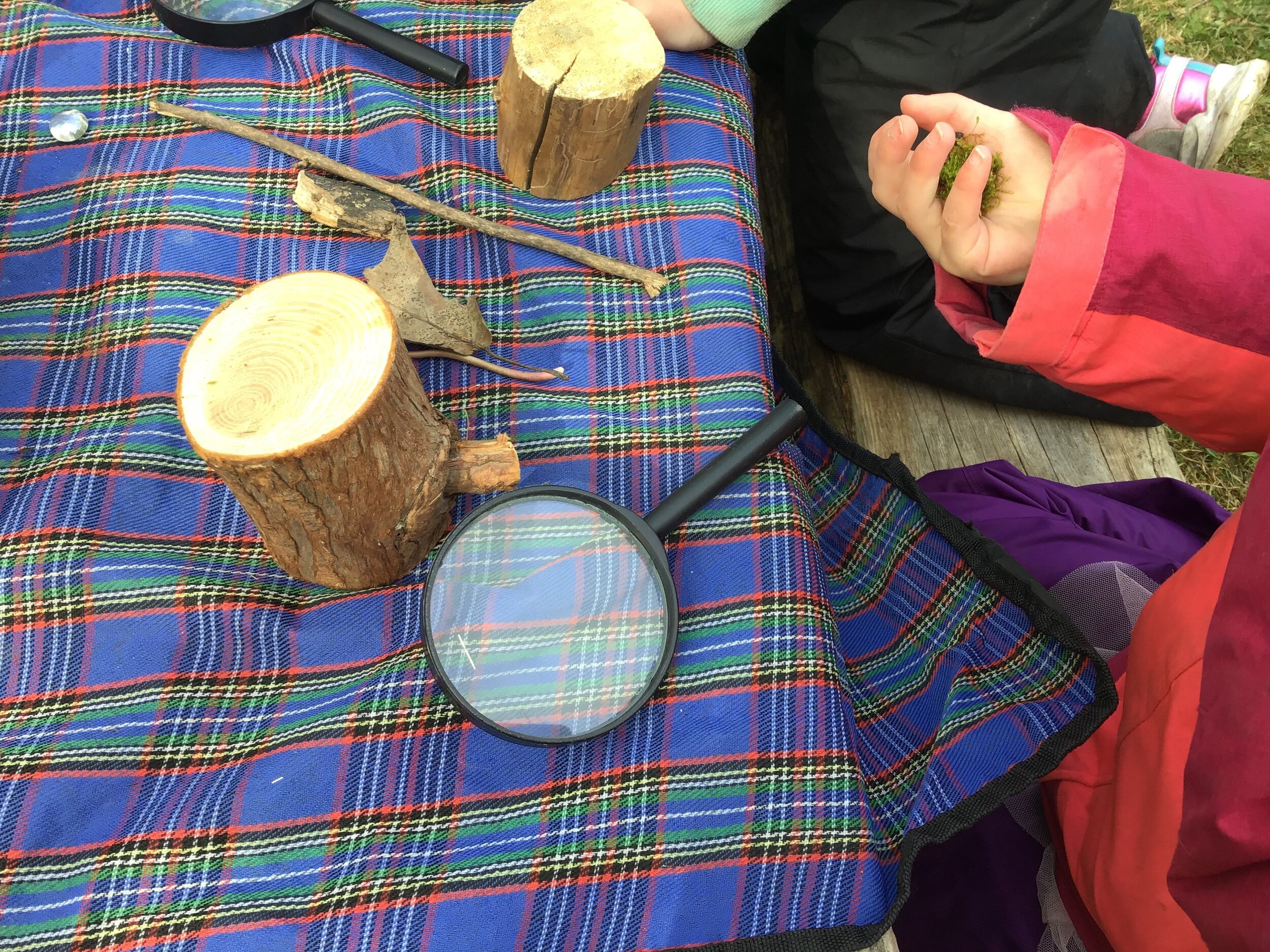The Spring sunshine dried the forest floor at Woodside National Historic Site and we were able to explore the wooded area the children call “The Forest on The Hill”. Observing the children moving among the trees and revisiting projects from past seasons was inspiring to see. We observed the Trout Lilies, May Apples, Trilliums, Jack-in-the-pulpits or Cobra Lilies, and many more amazing plants blooming in the forested areas. These observations of the seasonal blooming clock inform us about systemic connections: for example, flowers bloom in succession and support insect life in the forest, insects in return pollinate the plants, or in the case of the Cobra Lily provide nutrition. Some of the children carefully observed the unique shapes and colours of the Cobra Lily. Counting the leaves some children noticed the similarities between the triple-leaved structure of the Trillium and the triple-leaved structure of the Cobra Lily. The children used the nature guides to identify the spring flower species.
A group of children searched for moss and flower segments broken off by the wind to incorporate into their loose material explorations. “It looks like a Pine Forest!”- someone exclaimed looking at the Mosses with magnifying glasses. Hmmm! perhaps these explorers will take us on a journey of learning more about the fantastic life of Mosses. Did you know that Moss spores travel globally, the soft little green clump in your garden might be visitors from New Zealand?
The children requested the Story of the Three Sisters to remind them of their planting adventure last week. Dewe’igan retold the story and engaged the children in discussion about their interpretations of the story. The children were observing the garden expectantly looking for the “Three Sister Sprouts”, a group of children were working very hard and carried multiple jugs of water to the garden and lovingly watered the growing seed sisters. We are looking forward to seeing the little sprouts emerge, we hope that the squirrels are not too hungry and will leave many of them for us to grow and enjoy.
The children revisited their previous knowledge about the ethical principles of The Seven Grandfather’s Teachings, symbolized by animals. The children translated Anishinaabemowin words independently into English with Dewe’igan. Dewe’igan spoke about the ethical principles the Sabe embodies. I am sure the children would be glad to share the story of the Sabe with you. Dewe’igan gifted us with a second story, the story of the little people, Baangi Anishnaabeg, who take care of the waters and the plants. These beautiful, nature centered stories inspire and nurture our budding ecological identities.
The children worked very hard on building the safety area around the fire and requested Cedar tea for a treat again. They built the fire and were actively engaged in discussions as the project emerged. I was deeply touched by the independence of the children and by the kind support they showed to a child who just started in the Forest and Nature School program. Dewe’igan introduced us to the Anishinaabe tradition of sharing the first tea with Mother Earth and enjoying the second steam as a drink. Gratitude and science met in her story: removing the surface oils from the cedar leaves enhances the health benefits and the taste of the tea.
The discussions of the Ancient Wisdom of sharing tea with Mother Earth and the scientific data supporting the nutritional benefits of the practice reminded me of Wade Davises work with National Geographic. He celebrates the leadership of Indigenous, Earth Guardian, or “Wayfinder” cultures in guiding humanity in changing the way we learn, look at science and environmental activism. Please explore “The Wayfinders: Why Ancient Wisdom Matters in the Modern World”, a wonderful book by Wade Davis. The following lecture by Wade Davis explores his research through breath-taking images from around the World https://www.youtube.com/watch?v=XuJsbjKKh3E. Enjoy!
Szeretettel, Eva
